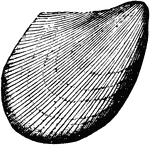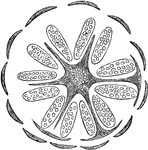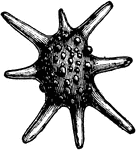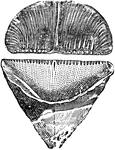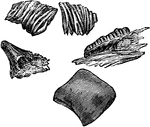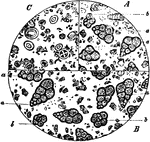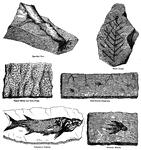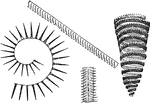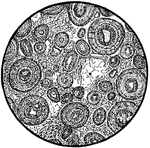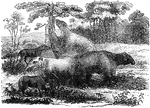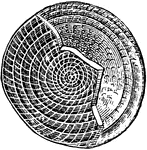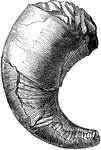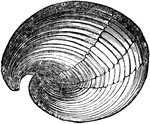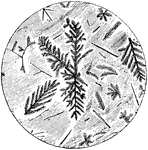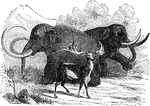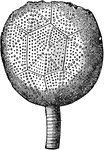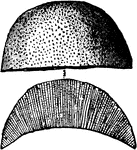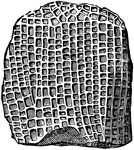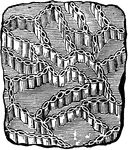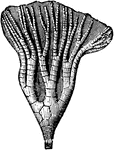The Paleontology ClipArt gallery offers 87 illustrations of the study of ancient life, particularly through an examination of the fossil record.

Sigillaria, An Ancient Tree
Sigillaria is the generic name assigned to this ancient arborescent lycopod. Occassionally the trunks…

Paradoxides Harlani
Paradoxides was a genus of relatively large trilobites, extinct marine arthropods, that form the class…

Pacops Articulate
An ancient articulate from the Paleozoic time, Pacops bufo from the Hamilton group.
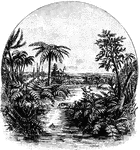
Carboniferous Landscape
The continents during this age consisted mainly of large, flat, marshy areas, covered with luxuriant…

Chrysalidina Gradata
This illustration shows the calcareous shell Chrysalidina gradata. These shells are mostly very small,…
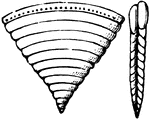
Cuneolina Pavonia
This illustration shows the calcareous shell Cuneolina pavonia. These shells are mostly very small,…

Distortion of Fossils
Distortions of fossils from uplifting: 1) natural form of the shell Spirifer disjunctus (1-4), 2) shortened…
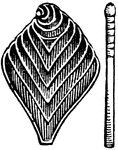
Flabellina rugosa
This illustration shows the calcareous shell Flabellina rugosa. These shells are mostly very small,…
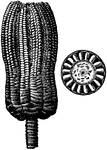
Fossil Encrinite
When the remains of an animal or plant are exposed to the air or buried in dry earth, they generally…
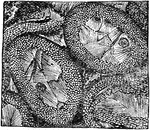
Fossil Wood
"Microscopical section of Fossil Wood, from clay iron-stone nodules; Oldham." -Taylor, 1904
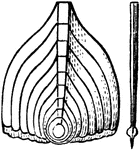
Frondicularia Annularis
This illustration shows the calcareous shell Frondicularia Annularis. These shells are mostly very small,…
Fusulina Cylindrica
This illustration shows the calcareous shell Fusulina cylindrica. These shells are mostly very small,…
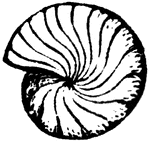
Fusulina Cylindrica
This illustration shows the calcareous shell Fusulina cylindrica. These shells are mostly very small,…

Fusulina Cylindrica
Fusulina cylindrica, a typical foraminiferal shell forming rocks in the later Paleozoic. A single shell…
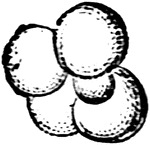
Globigerina Rubra
This illustration shows the calcareous shell Globigerina rubra. These shells are mostly very small,…

Grammostomum Phyllodes
This illustration shows the calcareous shell Grammostomum phyllodes. These shells are mostly very small,…

Lepidodedron
"a Lepidodendron (restored); b & c impressions on back; d stem with leaves; e leaflet; f fruit of Lepidodendron,…

Lituola Nautiloides
This illustration shows the calcareous shell Lituola nautiloides. These shells are mostly very small,…
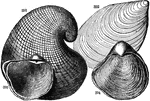
Mesozoic Mollusks
Four varieties of mollusks from the Mesozoic time: "391, Exogyra costata; 392, Inoceramus problematicus;…

Goniatites Mollusk Fossil
An ancient mollusk from the Paleozoic time, Goniatites Marcellensis from the Hamilton group.
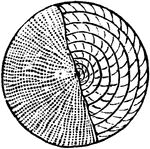
Nummulites Nummularia
This illustration shows the calcareous shell Nummulites nummularia. These shells are mostly very small,…
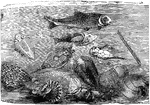
Paleozoic Animals
"Fish, trilobites, brachiopods, corals, and graptolites of the Palaeozoic epoch." -Taylor, 1904
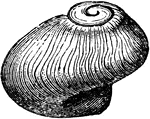
Platyceras Mollusk
A mollusk radiate from the Paleozoic time, Platyceras angulatum from the Niagara group.
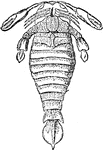
Pterygotus anglicus
"Huge fossil Crustacean (Pterygotus Anglicus). Old Red Sandstone, Forfarshire." -Taylor, 1904

Actinocrinus Radiate
An ancient radiate from the Carboniferous Age, the Actinocrinus proboscidialis.
